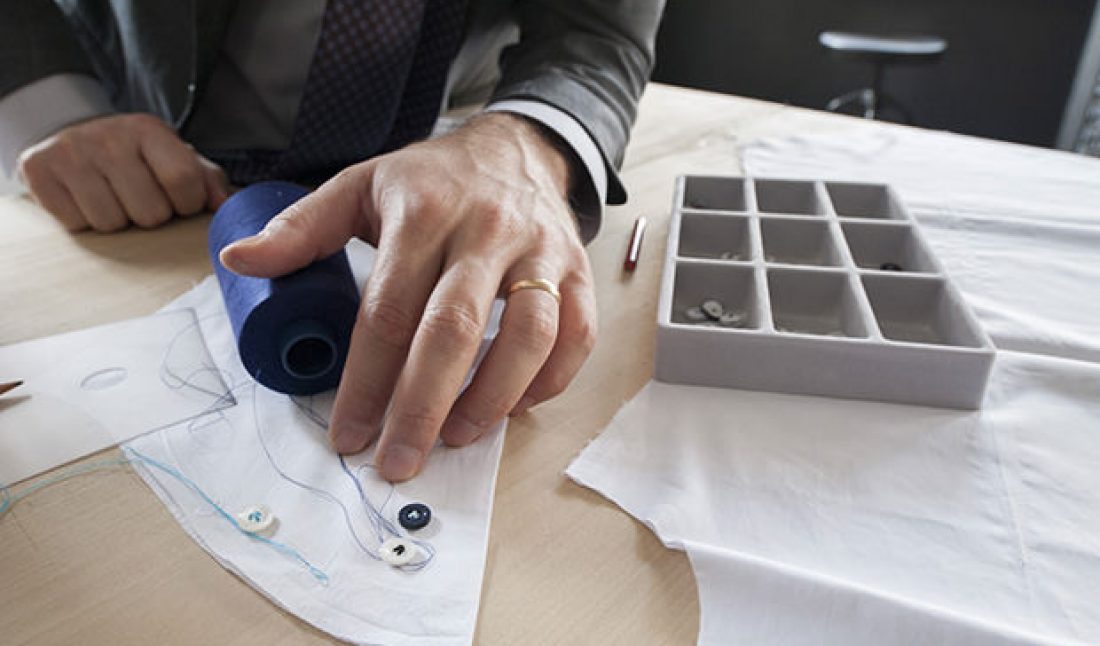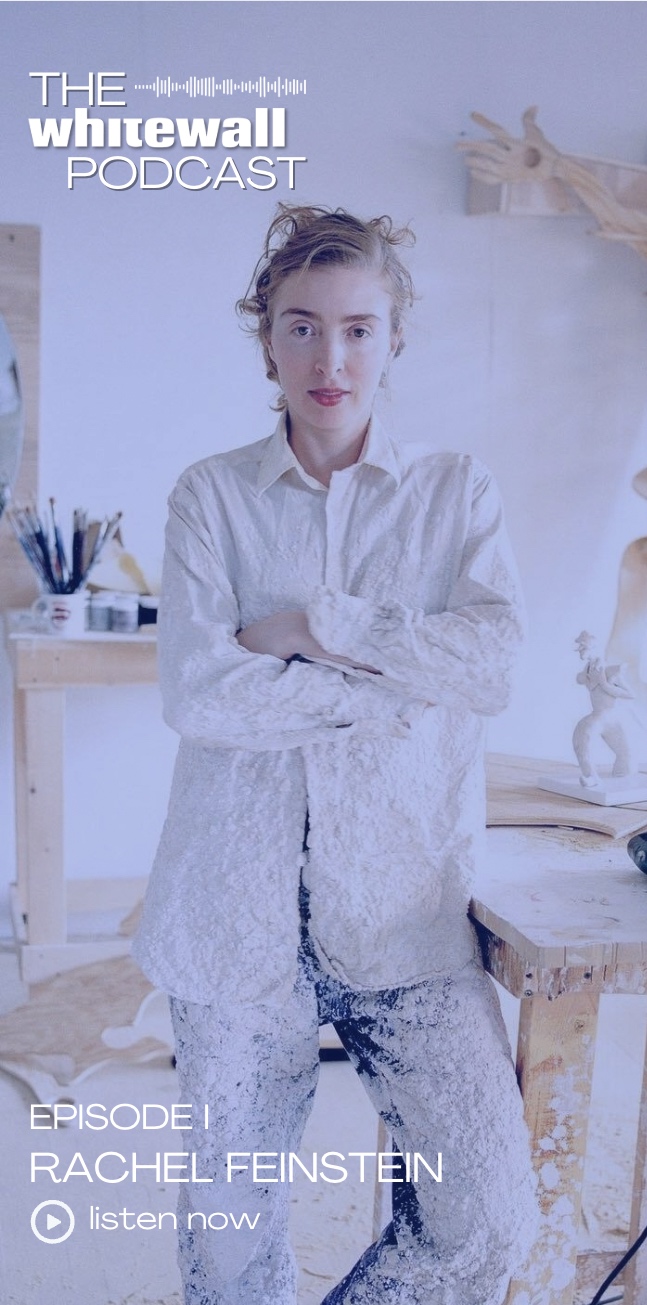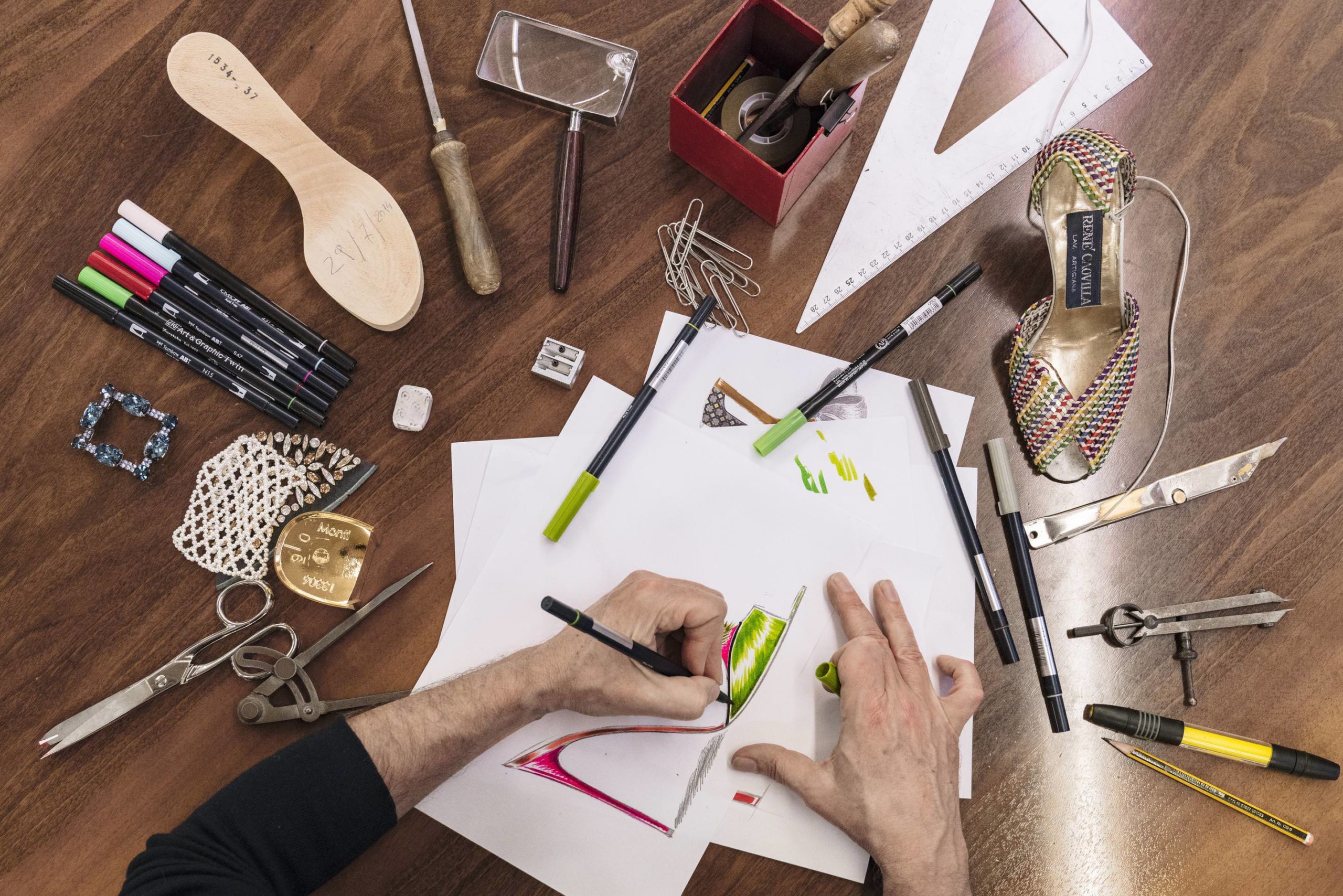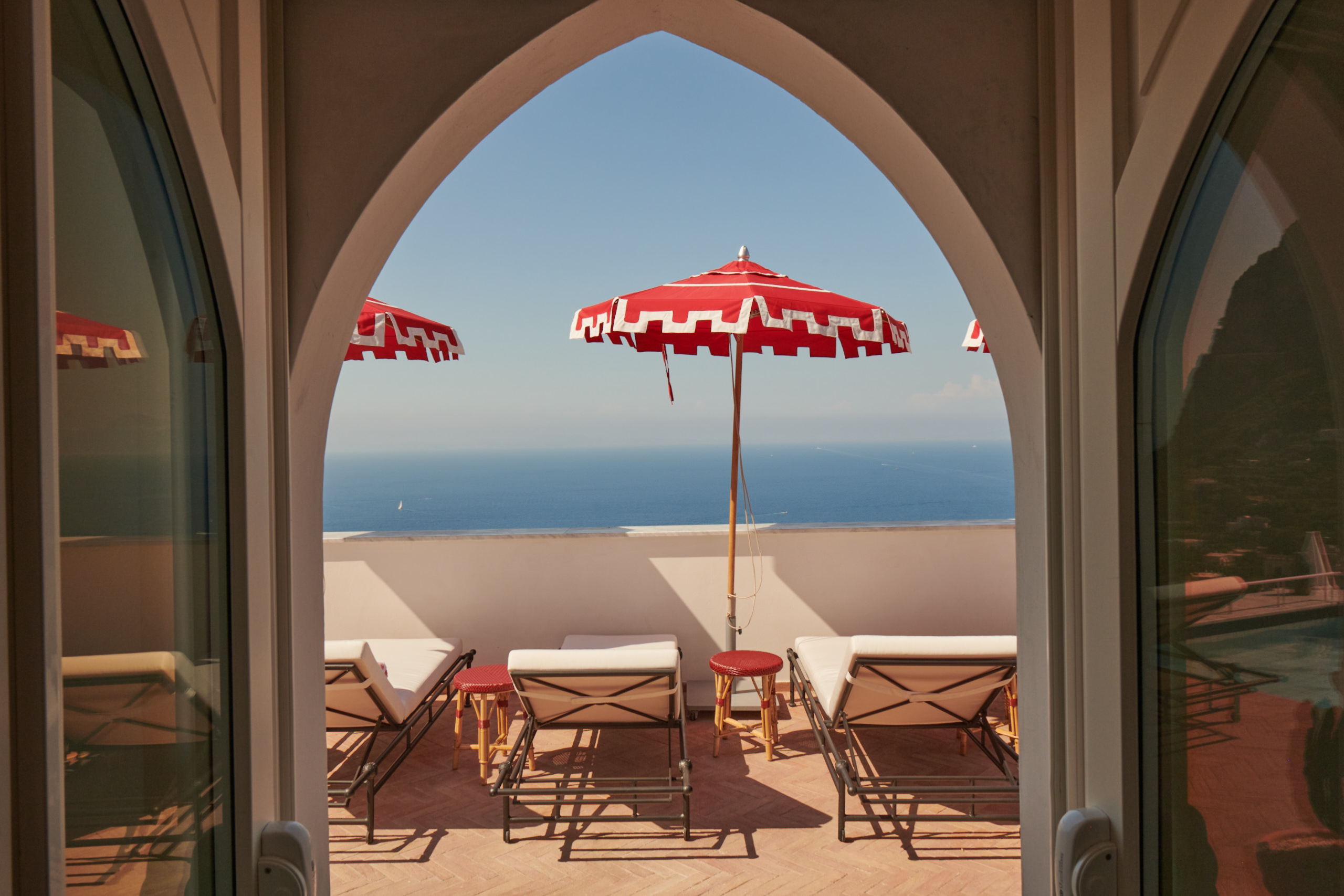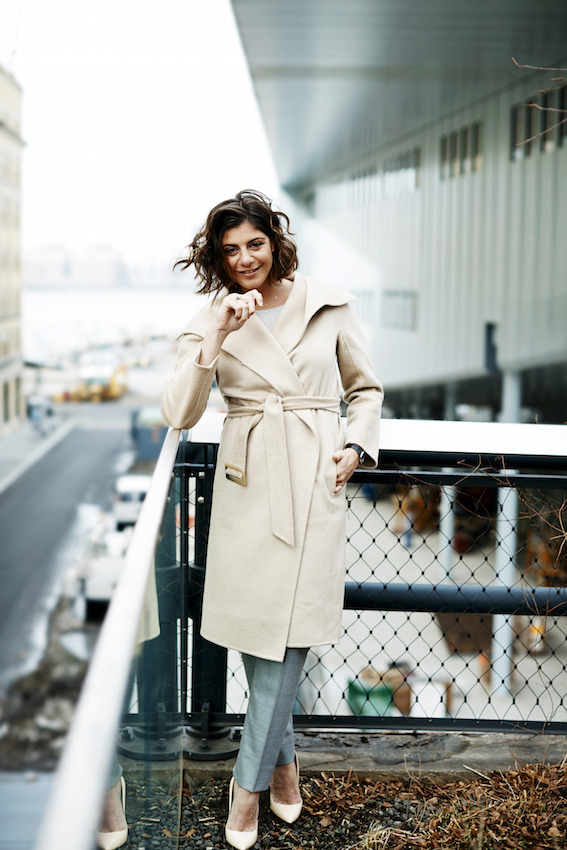Tucked behind an unassuming little door on bustling 57th Street lies the work space of Bellucci Napoli‘s master tailor Simone Olibet. The Italian-born tailor’s bespoke suits and shirts are giving New Yorker’s a rich taste of the Neapolitan high-life. The sprawling multi-floor space is complete with a spiral staircase, aged wood and love-worn leather chairs. Guests are given the chance to enjoy both the process of bespoke tailoring, and the Neapolitan social customs that go hand-in-hand with the bespoke tradition. Bellucci Napoli also recently unveiled its newest project; a bespoke collection for women. Whitewall sat down with Olibet to talk about his passion for fashion, his excitement about the new women’s line, and what projects he’s working on for the future.
WHITEWALL: How did you get started in bespoke tailoring. Was it an interest that you always had?
SIMONE OLIBET: I started when I was 20, now I am 33. I finished high school and then I started to study how to make patterns because fashion was, and is, my passion. I actually started as a designer not a tailor but I understood that to become a designer is very hard.
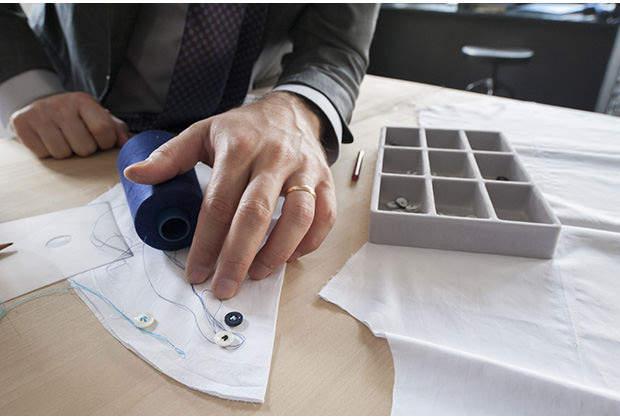 Design handmaking
Design handmaking
After three or four months, I made my first shirt and it was great. I learned it was very easy for me to make shirts. So from there I went to work in a lot of small factories to learn different things. And every day I was trying to find the experts in tailoring so I could learn the secrets, the techniques, everything.
WW: The Bellucci Napoli brand has emphasized its keeping of Neapolitan tradition. What about the tradition makes it such a source of pride for the company?
SO: Neapolitan technique is different than the other techniques because the Neapolitan cut is different; it focuses on the shoulders. The shoulders are so different because we make higher shoulders. There’s more room with them so you can move. [Neapolitan tailoring] is like a second skin but very comfortable. So if you can match this cutting you can make real shirts.
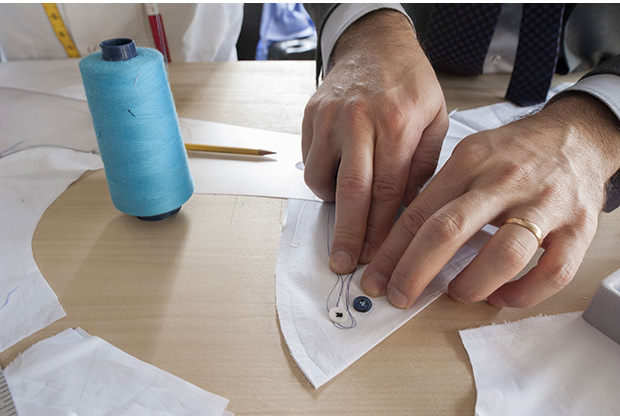 Design handmaking
Design handmaking
WW: What are the most important elements of your shirt-making process?
SO: I think the most important thing is to have a picture of the client. A picture in your mind, not a real picture! When I make a pattern for a client I often close my eyes and try to imagine the client. And when you take the measurements you also have to talk with the client and understand his priorities.
WW: In being a master tailor and working in the bespoke field where the emphasis is on the client’s privilege to choose exactly what they want, how do you balance your professional knowledge with your client’s desires? For instance, if someone picks something you don’t think will be flattering, how do you weigh your expert opinion with making sure that your client leaves satisfied?
SO: Once it happened that a client always picked the same shirts. I just tried to suggest something different to him. Often though, it’s very hard to do this because many times clients are very set in their ways. They want white, light blue, white, light blue. So I try to change small details, like use different buttons or different stitching on the buttons, just little touches that don’t change the shirt too much.
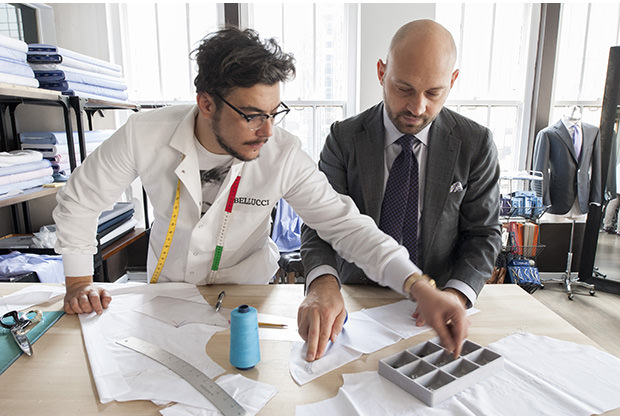 Design handmaking
Design handmaking
WW: Why is the collar such an important part of the shirt for you? How do you make them and what sets your collars apart?
SO: I think the collar is a piece of art. It takes engineering to make a collar because it’s very hard to build them. It’s also the first thing you see when you talk with a person so the collar must be perfect. Here we are able to change the collar according to the shape of the clients face.
Another important factor is the weight of the collar. When you make a collar you have to consider the fabric; if the fabric is very light you have to use light inner-liner. If the fabric is heavy you have to use a heavy inner-liner. Even if the client asks for a heavy collar, if you cannot do it you have to tell them: “Look, if you make a heavy collar with this fabric the collar is going to go down and not look great.”
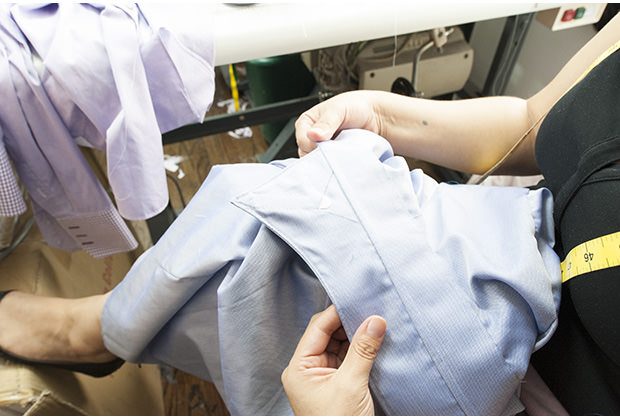 Design handmaking
Design handmaking
WW: How did the women’s line of shirts come about?
SO: The women’s shirts are a lot more difficult than the men’s because women’s bodies are very different from one to another. You have to consider a lot of things in making women’s shirts. You have to think about the shoulder, breasts, waists, and the pelvis too. And those things change a lot between every woman. The man is not like this, the man is almost standard.
This isn’t a problem for me though; making women’s shirts is fun because it’s different. That’s the women’s collection for me: a fun process. With a woman you can create a lot of new things. You can’t always do this for men because they prefer classic, more permanent looks. With a woman you can change everything. The back, the sleeve, you can even make something particularly special and mix fabrics.
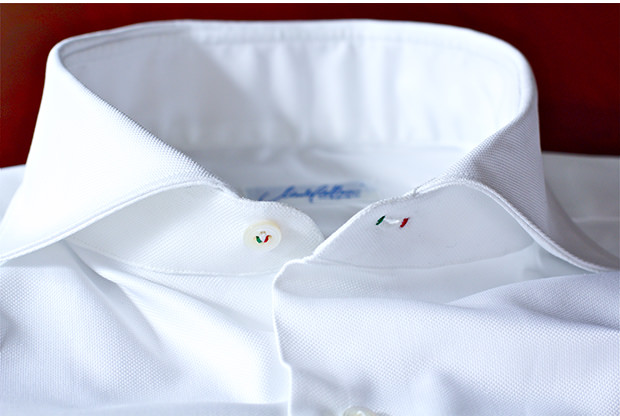 Bespoke Collection
Bespoke Collection
Recruited by a master shirt maker when he was just 20 years old, Simone divided his time between his studies and the artistry of the craft. He succeeded the cutter five months later and decided to devote himself full-time to the role of stylist and shirt maker.Over the course of ten years, Simone’s drive to perfect his skills and express his passion for the cut of a collar – the utmost in shirt making mastery – would cement his dedication and highlight his modesty. An artist who attributes ‘soul’ to the cut of a collar is part of a legendary Neapolitan tradition that risked becoming extinct. Simone’s undivided commitment to the legendary shirt making tradition gained him the respect and support of many important players in the field of bespoke.







